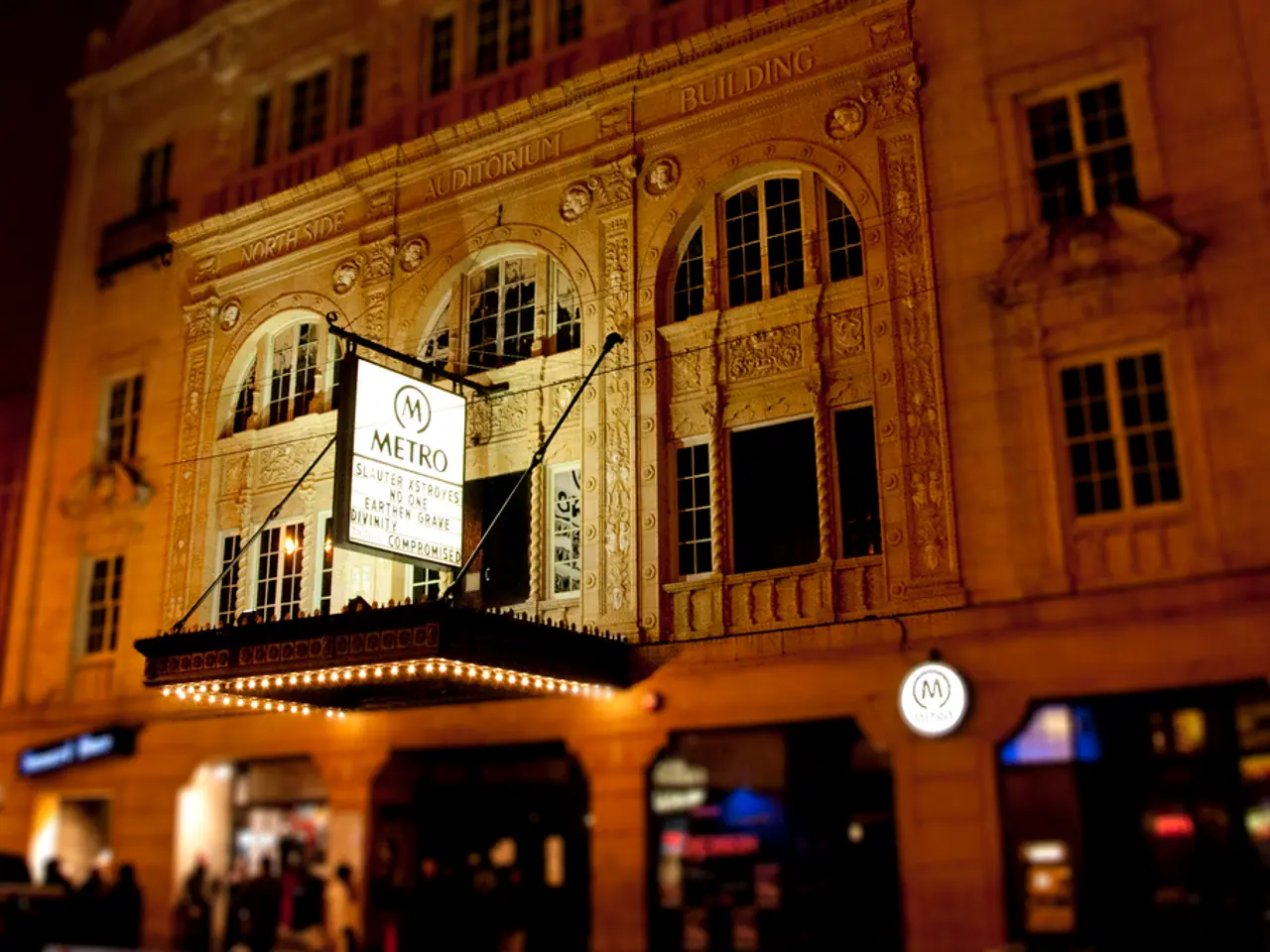Local merchants and labor unions in the Garment District are resisting a proposed rezoning project in Midtown South.
In the heart of New York City, a contentious debate is unfolding over a proposed zoning plan known as the Midtown South Mixed-Use Plan (MSMX). As of early August 2025, the plan, which aims to convert 42 blocks in Midtown South into around 9,700 new homes, has passed review by the City Planning Commission and is now awaiting a vote from the City Council [1][4].
At the centre of the opposition to the MSMX plan is a coalition led by the New York Fashion Workforce Development Coalition (NYFWDC). This group, comprising small businesses, nonprofits, and labor unions from the Garment District, is vocal about its concerns that the plan could displace nearly 800 existing businesses and harm over 5,300 workers in the local fashion and entertainment industries [1][2].
Pooja Patel, the communications and mobilizing associate of USA 829, IATSE, has been a leading voice in this coalition. She accuses city officials of ignoring local workers' concerns and argues that the coalition is not "anti-housing" but opposes "development for development's sake" that threatens the community's livelihood [1].
The coalition's primary concern is that the MSMX plan prioritizes housing and development without adequate safeguards for the existing economic and cultural fabric of the neighbourhood [1][2]. They claim that the plan fails to protect businesses and workers, many of which serve Broadway and the film industry, that are essential staples of New York culture [1].
Costume designer Carisa Kelly, for example, relies on the Garment District for her job due to its proximity to major transportation hubs and diverse business density [1]. The advocates also point out that 80% of Met Gala costumes are made by Garment District businesses, highlighting the cultural importance of the area [1].
The Garment District Alliance, a business improvement district backing the MSMX plan, has not responded to requests for additional comment [1]. However, Barbara Blair, president of the Garment District Alliance, believes the MSMX plan would provide relief to the district's businesses while addressing the city's housing crisis [1].
Joe Marvilli, a spokesperson for the Department of City Planning, views the MSMX plan as a "win-win" for both the garment and fashion sectors and the development of residents, workers, and employers [1]. He also mentions continued support for local businesses through zoning and non-zoning tools [1].
The opposition to the MSMX plan reflects broader tensions regarding balancing residential development with preservation of historic industry and jobs in Midtown South. As the city council prepares to vote on the plan, the coalition's concerns about the potential impact on local businesses and workers remain a significant factor in the ongoing debate.
References:
[1] Stivers, A. (2025). Garment District Coalition Opposes Midtown South Mixed-Use Plan. The New York Times. Retrieved from https://www.nytimes.com/2025/08/01/nyregion/garment-district-mixed-use-plan.html
[2] Kaufman, L. (2025). Garment District Coalition Fights Back Against City's Mixed-Use Plan. The Wall Street Journal. Retrieved from https://www.wsj.com/articles/garment-district-coalition-fights-back-against-citys-mixed-use-plan-11631852414
[3] City Planning Commission (2025). Midtown South Mixed-Use Plan. Retrieved from https://www.nyc.gov/html/cpc/html/zoning/msmx.shtml
[4] Department of City Planning (2025). Midtown South Mixed-Use Plan Timeline. Retrieved from https://www.nyc.gov/html/dcp/html/zoning/msmx_timeline.shtml
The coalition, consisting of small businesses, nonprofits, labor unions, and urbanites like Pooja Patel, is advocating against the MSMX plan, contending that city officials overlook local workers' concerns and prioritize development over community livelihood. The group is particularly concerned that the plan, which considers financing for real-estate investments and housing, lacks adequate measures to protect existing businesses and cultural institutions within the Garment District, which are integral to the city's economy and entertainment industries.




